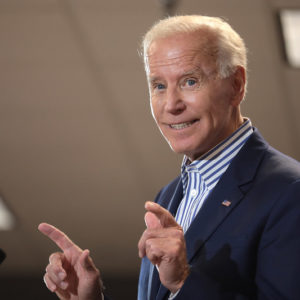Sometimes, well-meaning government policies flounder because of unintended consequences.
Sometimes, policies simply fail to meet ambitious goals.
Sometimes policies are incoherent from the outset, steeped in fantasies, certain to fail.
Welcome to Joe Biden’s climate policies—policies that really aren’t expected to do much for the climate except show the world how serious the administration is in fighting climate change, with the delusional belief that if the U.S. leads everyone else will follow.
Actually, U.S. policies aren’t even climate policies; they’re energy policies.
It matters because replacing conventional coal and natural gas with renewables like wind and solar will not necessarily (and probably won’t) lead to the desired effects on the climate.
U.S. policies have two goals that are presented as one: The first is to cut US CO2emissions. The second is to prevent global temperatures from rising by more than 1.5°C.
But renewables neither guarantee a substantial reduction in emissions nor will the thousands of them Biden seeks affect global temperatures much if at all.
Of course, renewable energy should reduce some CO2emissions but there is no one-to-one correspondence—that is, adding a megawatt (MW) of renewables does not close down a MW of coal.
In fact, the massive switch to renewables doesn’t even mean emissions will be reduced by much. Wind and solar are intermittent and unreliable so that they require backup. In most cases, that has meant fossil-fueled backup.
Germany, which has been a leader in renewables, saw emissions plateauing in the 2010s even though conventional generating plants were closed in favor of massive wind and solar installations.
The hope is that battery backup will save the day, but right now such backup is far too expensive to do the job without burdening the economy as a whole, and poor and middle-class consumers especially, with huge increases in electricity costs.
Then there’s the question of temperature. Even the Biden administration admits U.S. emissions cuts (a goal of 50 percent below 2005 levels by 2030) even if fully achieved will have a negligible effect on global temperatures. It’s how the whole world responds not just the U.S.
But the belief that if the U.S. acts and shows leadership, the rest of the world will follow is wishful thinking. What incentive does any developing country have to adopt an unreliable electric system just because the rich U.S. is doing so?
For the poorest nations of Africa and Asia, the goal should be to raise the standard of living and develop institutions that encourage investment and discourage corruption. That means for starters they should not cripple their economies by opting for intermittent and weather-dependent renewable energy systems that are expensive to operate and difficult to control.
Reliable electricity is the most crucial technological requirement for a modern economy. Coal-fired electric generation is far easier to manage than one based on wind and solar and would advance development much farther and more quickly.
Supposedly the rich countries were to provide $100 billion annually for developing countries to do what the former wanted them to do. But the full amount wasn’t raised last year and Biden’s promise of $5.7 billion annually is said by most observers to be much too little. Besides, $100 billion seems too little; after all, it’s only 5 percent of what Biden plans to spend in the U.S. alone.
But the effort seems futile in any case. Energy policy in the US has always been based on the dubious belief that it could only be solved, as the Carter administration put it, if “the Government…accepts responsibility for dealing with it comprehensibly…”
Substitute “climate” for energy and make it “governments” instead of government and you have the basics of the administration’s strategy on climate/energy policy. It didn’t work for Carter, why should anyone think it will work better when world governments (some of them corrupt) are involved?
Short prediction: It won’t.

